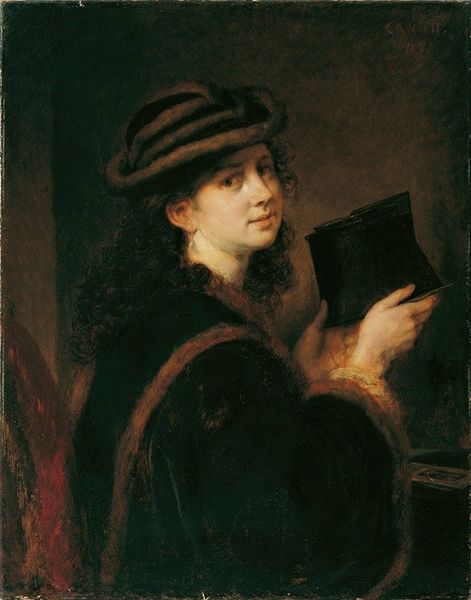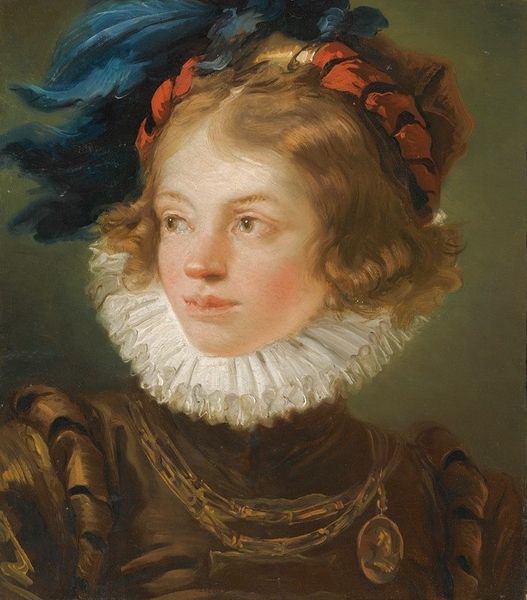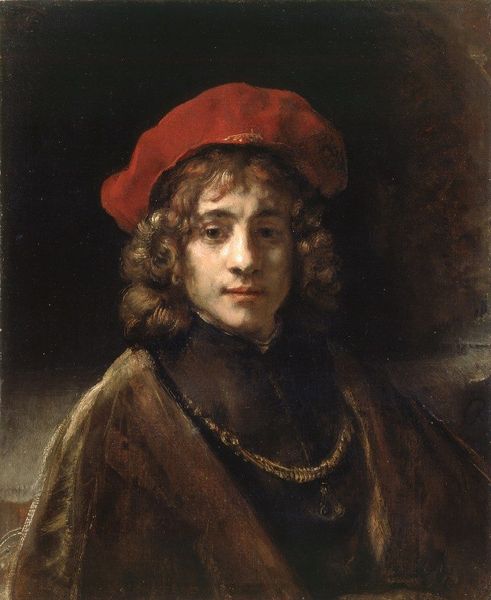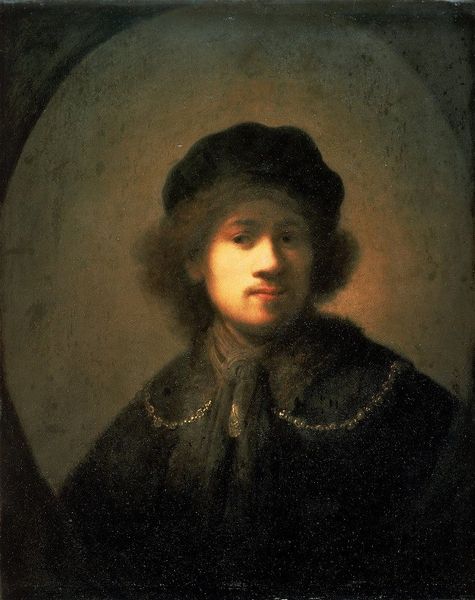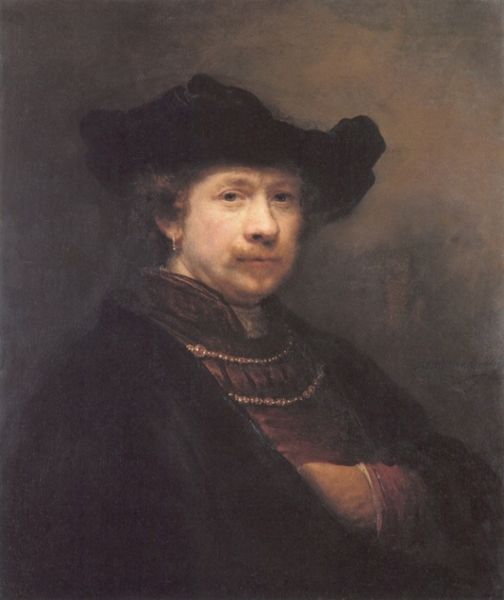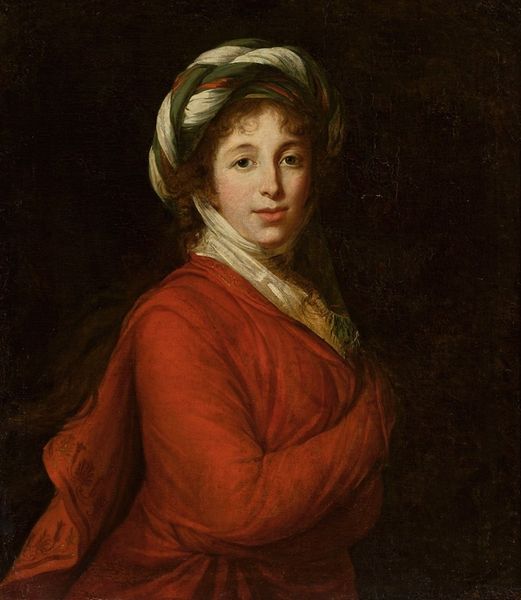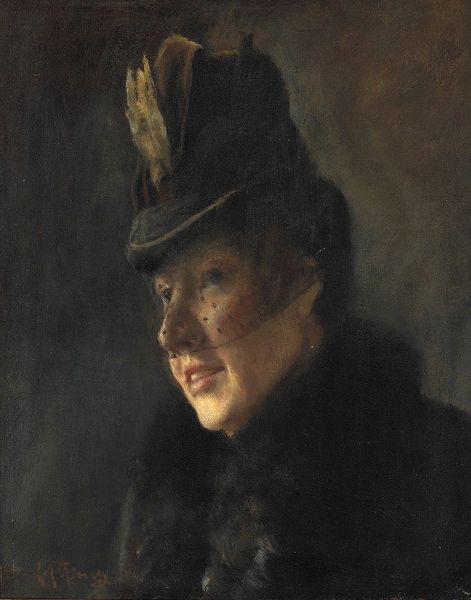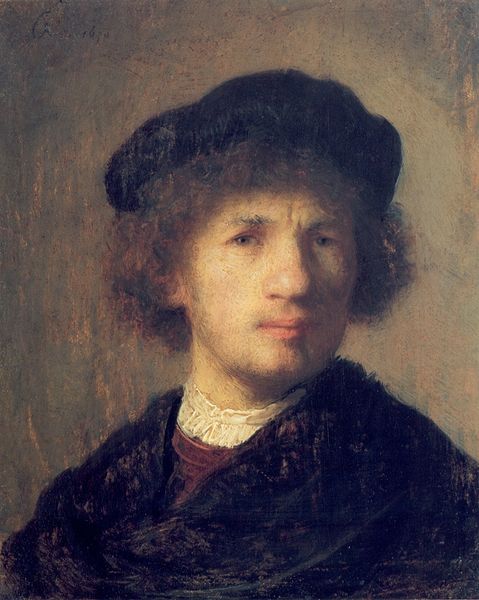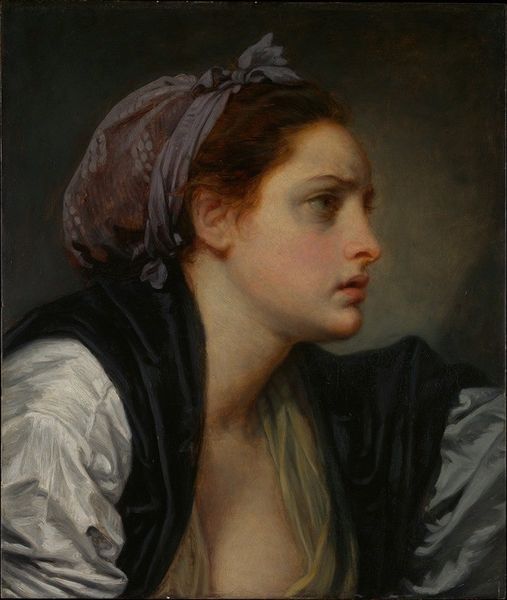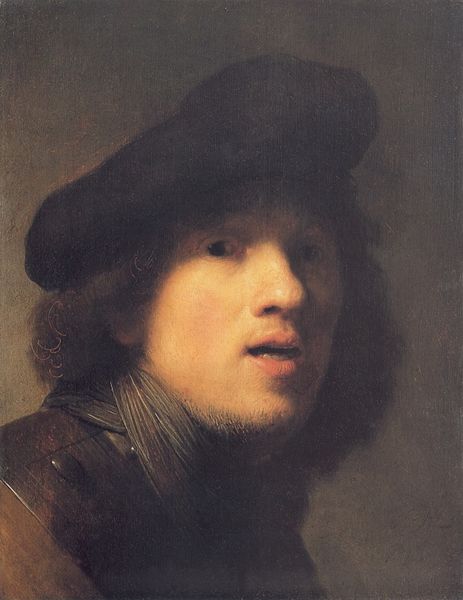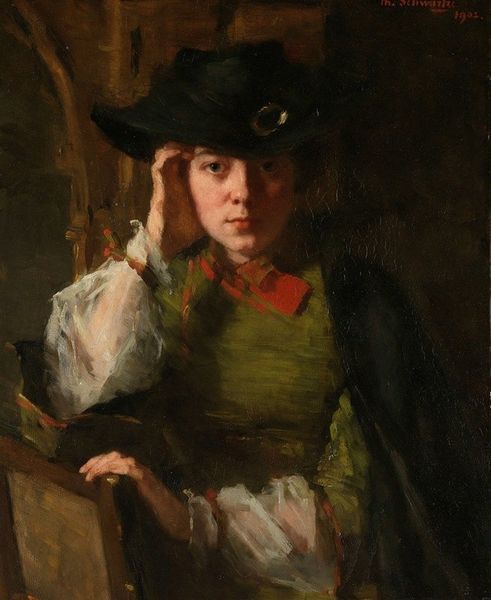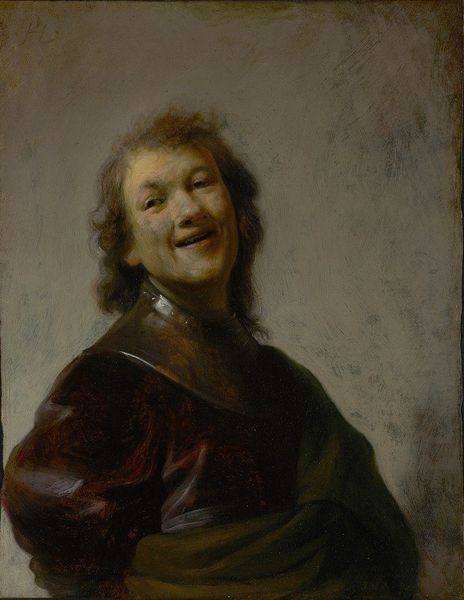
painting, oil-paint
#
portrait
#
figurative
#
self-portrait
#
baroque
#
dutch-golden-age
#
painting
#
oil-paint
#
figuration
#
portrait art
#
realism
Copyright: Public Domain: Artvee
Editor: Here we have Rembrandt van Rijn's 'Tronie' of a Man with a Feathered Beret, dating back to about 1635-1640, rendered in oil paint. I'm struck by the dramatic use of light and shadow; it almost feels like a stage production. What catches your eye in this piece? Curator: Immediately, the interplay between the textures commands attention. Consider the smooth, reflective quality of the armor against the softness of the feathered beret. Rembrandt masterfully uses impasto, particularly in the face, creating a tangible surface that captures light in a very specific way. Do you see how the brushstrokes themselves contribute to the overall form? Editor: Yes, I see that now! It's like the paint itself is sculpting the face. But why place so much emphasis on texture? What does it signify here? Curator: Texture, in this context, is not merely decorative. It embodies the physical presence of the subject, giving weight and substance to the portrait. Moreover, observe how the limited palette contributes to the tonal unity. Browns and blacks dominate, allowing the face, as the focal point, to emerge from the darkness with striking clarity. Notice that no matter where you shift your gaze on this painting, the composition draws you back to the details in the man’s face. Editor: That makes a lot of sense. The formal elements really do work together to create such a captivating and imposing image. Curator: Precisely. And by attending to the nuances of light, shadow, and texture, we gain a richer appreciation for Rembrandt's technical virtuosity and his profound understanding of visual language. Editor: This deep dive has shifted my perspective entirely. I thought it was just a portrait, but now I recognize how thoughtfully all of the individual elements play together.
Comments
No comments
Be the first to comment and join the conversation on the ultimate creative platform.
